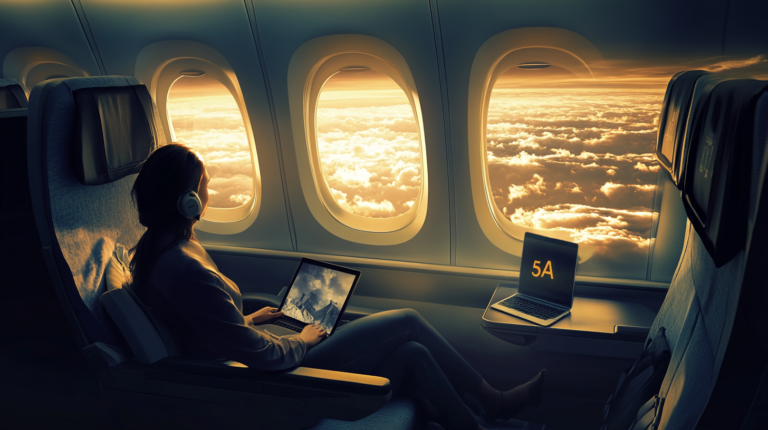Overcoming Jet Lag with Technology

For many globe-trotters and business professionals alike, the excitement of exploring new destinations often comes with an unwelcome companion: jet lag. This biological hiccup disrupts the body’s internal clock, leading to symptoms such as overwhelming fatigue, persistent insomnia, and general discomfort that can dampen the joy of travel. Fortunately, in our technologically advanced era, overcoming jet lag has become more feasible than ever. By combining cutting-edge technological tools with time-tested traditional strategies, travelers can now minimize jet lag’s impact and fully embrace their journeys from the moment they land. This comprehensive guide delves deep into how technology can be a game-changer in beating jet lag.
Understanding Jet Lag: The Circadian Rhythm Disruption
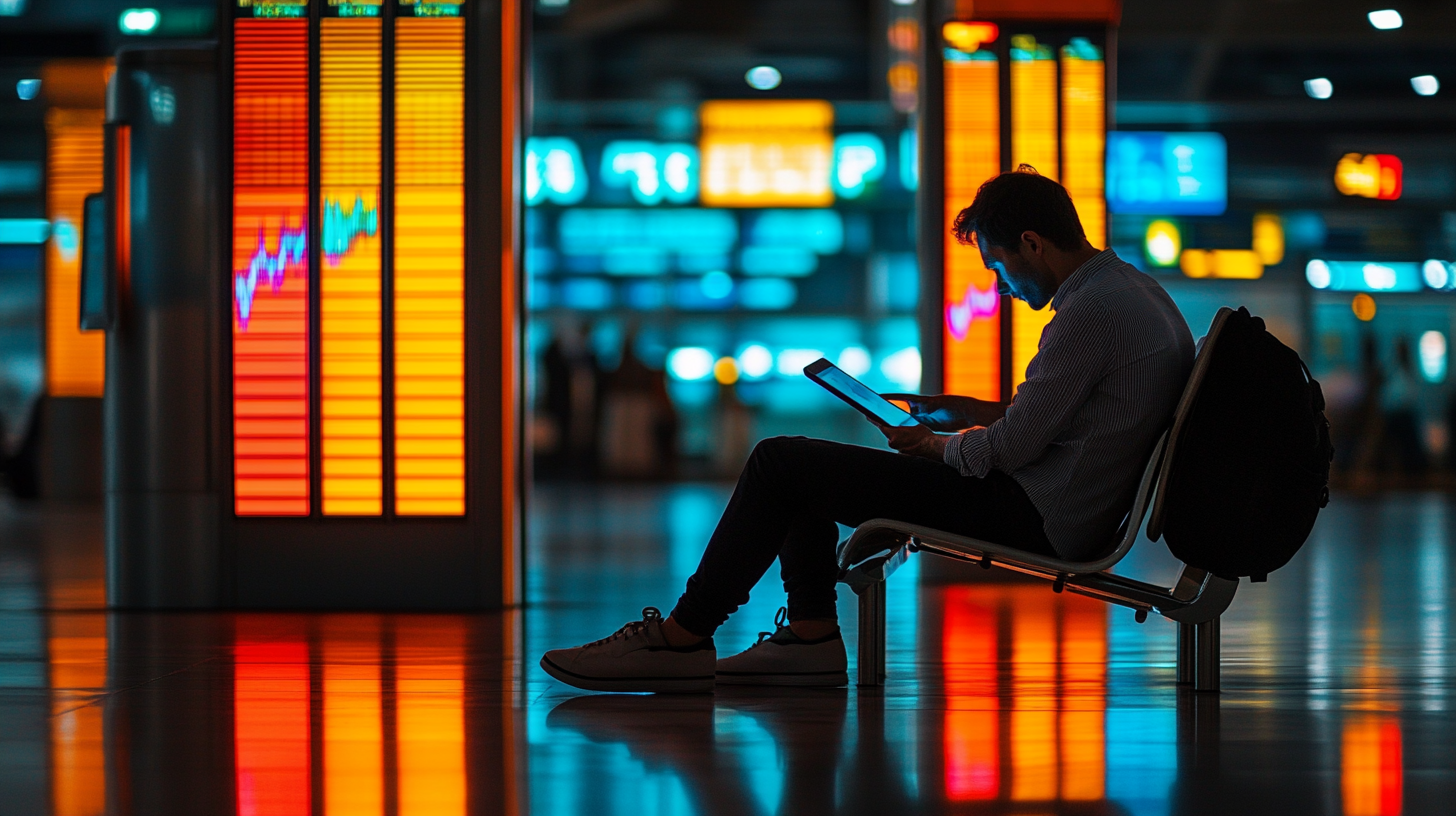
Jet lag, medically referred to as circadian dysrhythmia, is more than just feeling sleepy at odd hours; it represents a fundamental disruption of the body’s intrinsic time-keeping system. Our circadian rhythm, a roughly 24-hour cycle, dictates not only sleep and wake times but also influences hormone release, eating habits, digestion, and body temperature. This internal clock relies heavily on environmental cues like light and food to stay synchronized. When we traverse multiple time zones rapidly, as in air travel, this clock struggles to adjust swiftly, resulting in a misalignment with the new environment and triggering a host of physical and mental symptoms. Understanding these nuances, as explored in The Impact of Travel Direction on Jet Lag Severity , helps in planning and implementing effective strategies to mitigate jet lag.
Common Symptoms of Jet Lag
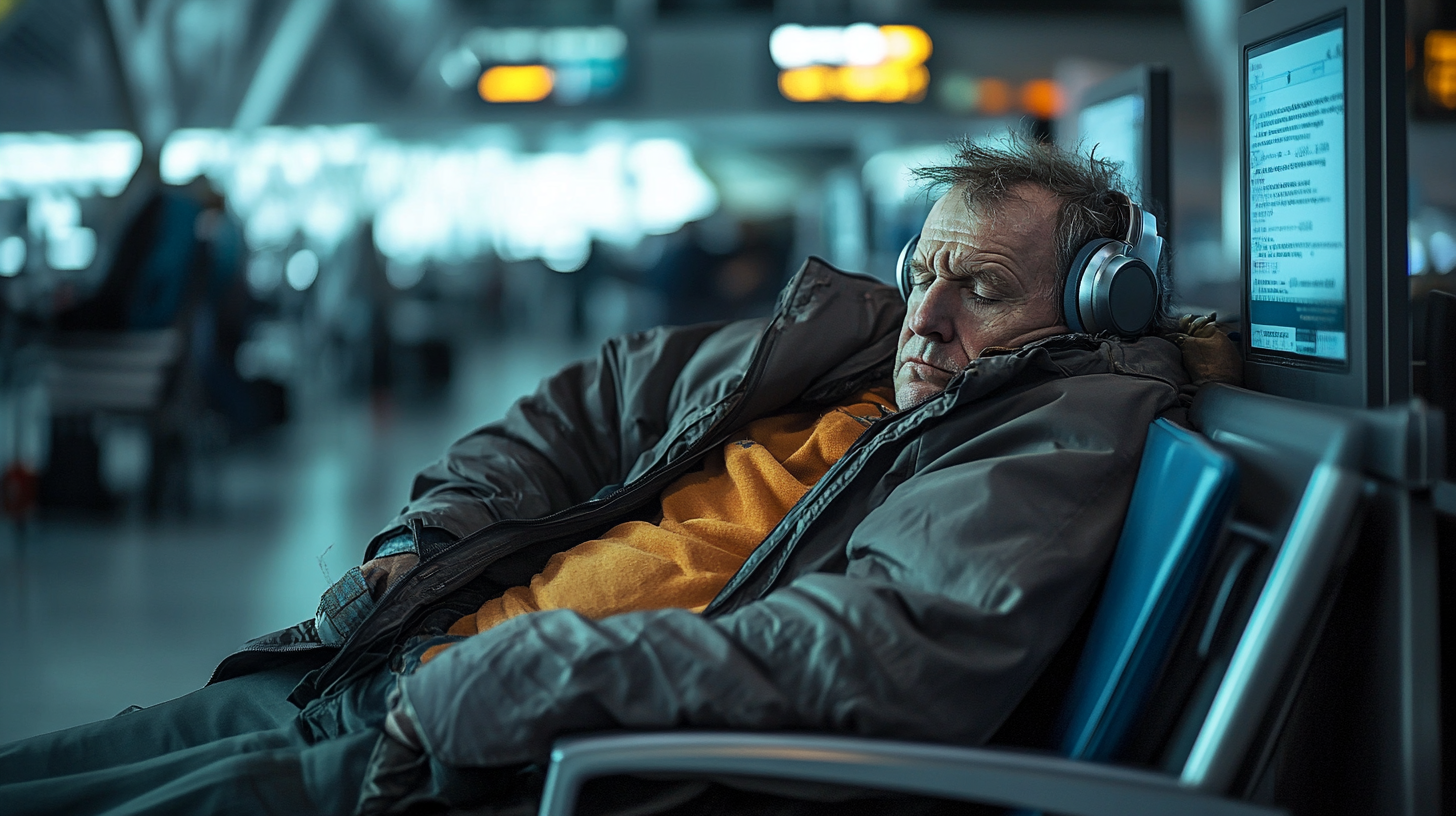
- Daytime Fatigue and Drowsiness: Feeling unusually tired during the day can hinder your ability to engage in activities or meetings.
- Difficulty Sleeping at Night: Insomnia or frequent awakenings disrupt restorative sleep, exacerbating fatigue.
- Mood Changes: Increased irritability, anxiety, or mild depression can impact interactions and overall enjoyment.
- Digestive Issues: Nausea, indigestion, or loss of appetite due to the body’s internal clock misaligning meal times.
- Reduced Performance: Impaired concentration, memory lapses, and slower reaction times affect both physical and cognitive tasks.
- General Malaise: A feeling of unwellness or discomfort that affects overall well-being.
The severity of jet lag is influenced by factors such as the number of time zones crossed, direction of travel, individual tolerance levels, and even age. Generally, eastward travel is more challenging than westward because it requires advancing the body’s internal clock, which is inherently more difficult than delaying it. This means adjusting to an earlier time is tougher than adjusting to a later one. Additionally, older individuals may find it harder to cope with jet lag due to decreased adaptability of their circadian rhythms.
Traditional Strategies for Combating Jet Lag
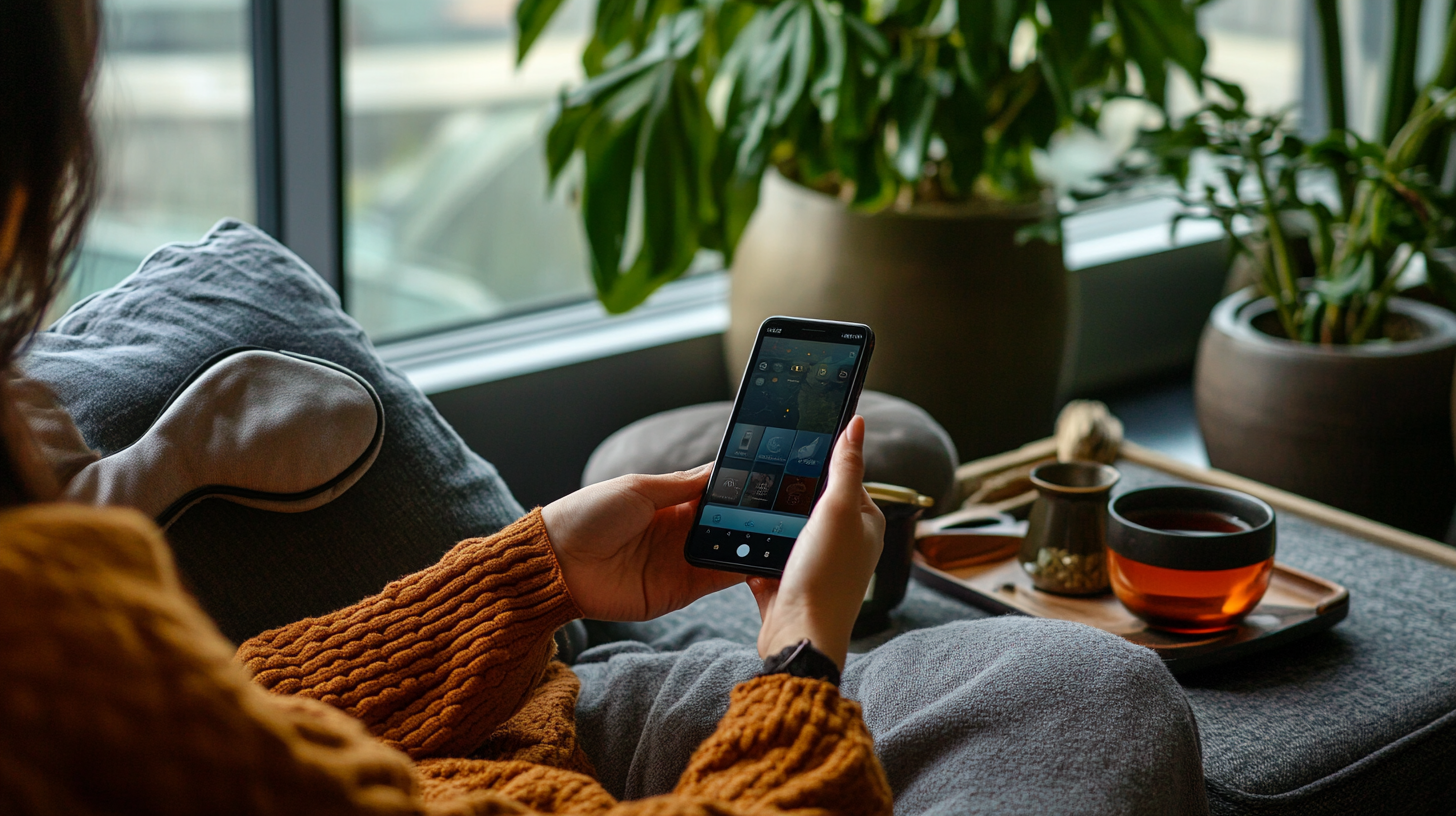
Before delving into technological solutions, it’s essential to understand traditional methods that have proven effective in mitigating jet lag:
Pre-Travel Adjustments
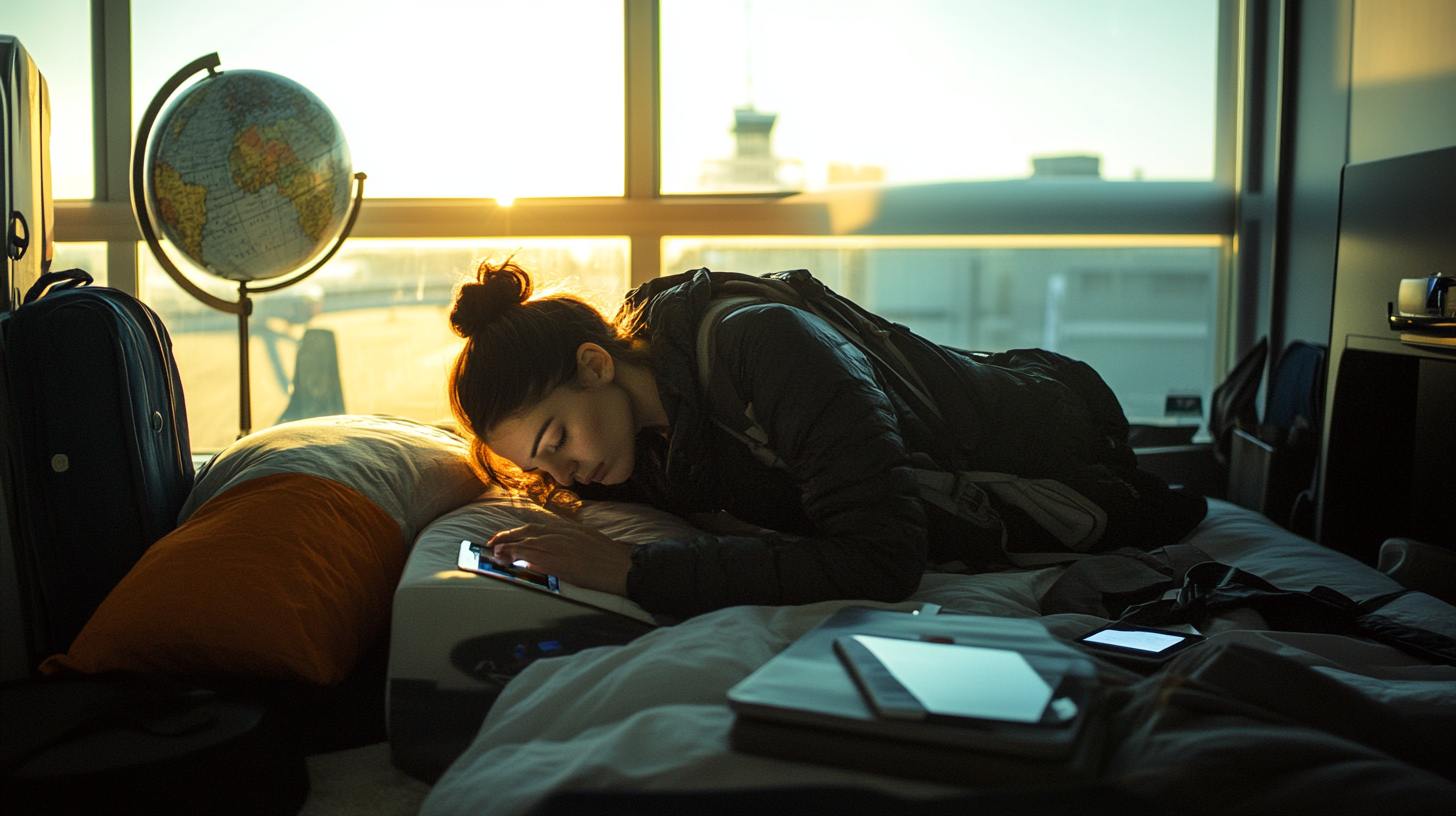
- Gradual Sleep Schedule Shift: Begin adjusting your bedtime and wake-up time incrementally, starting several days before departure. For example, if traveling east, go to bed earlier each night to align more closely with your destination’s time zone.
- Hydration: Stay well-hydrated before, during, and after your flight to combat the dehydrating effects of air travel. Drinking water regularly keeps you hydrated, which aids in overall bodily functions, including maintaining energy levels and reducing fatigue.
- Limit Caffeine and Alcohol: Avoid substances that can disrupt sleep patterns or dehydrate you. While caffeine may provide a temporary energy boost, it can interfere with sleep patterns and exacerbate jet lag. Similarly, alcohol can disrupt sleep quality and contribute to dehydration.
During the Flight
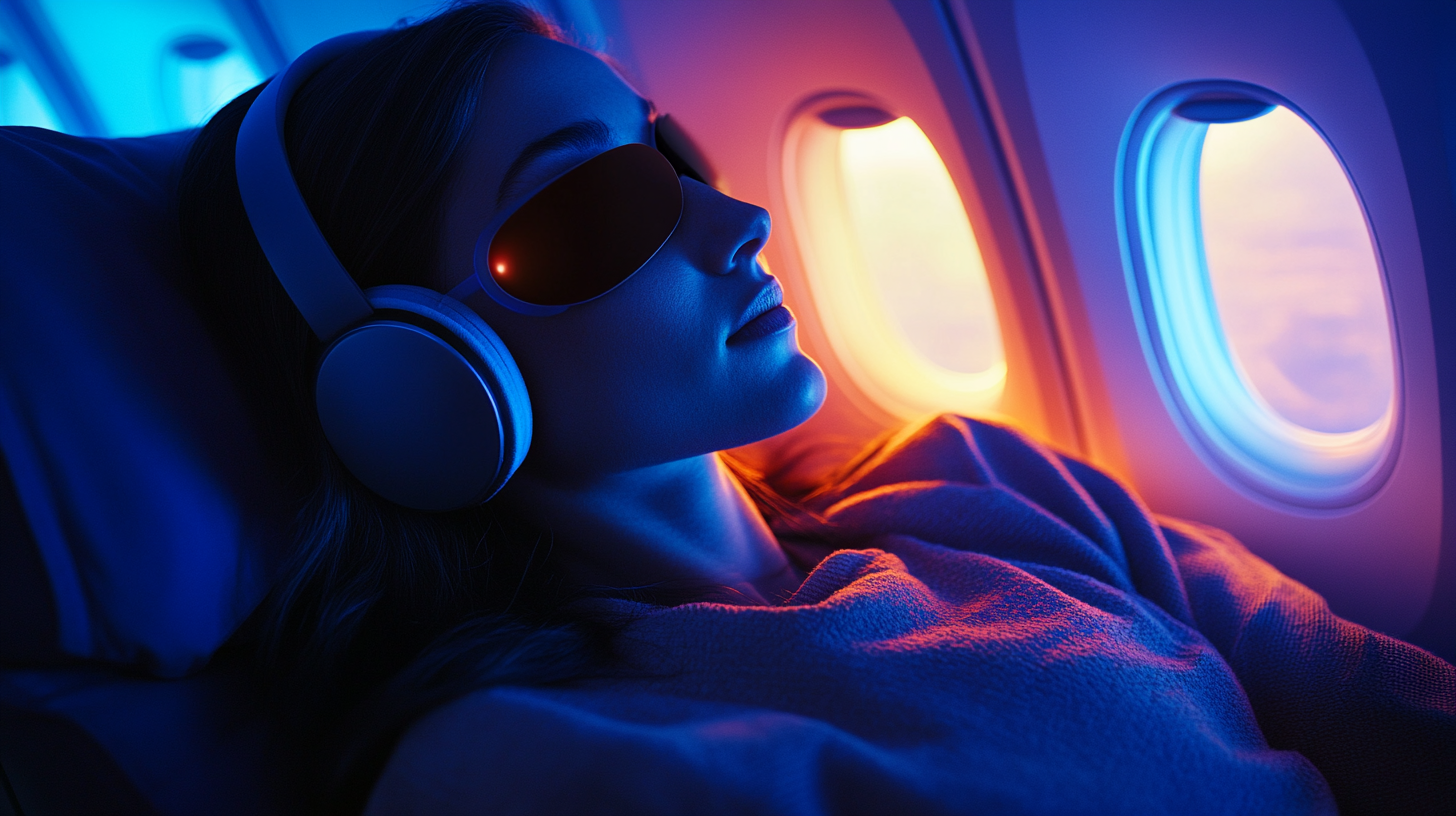
- Set Your Watch: Upon boarding the plane, adjust your watch and devices to the new time zone. This psychological trick helps your mind start acclimating to the destination’s schedule, influencing your behavior during the flight.
- Create a Sleep-Conducive Environment: Use earplugs, eye masks, and comfortable clothing to enhance in-flight sleep. Bring items like neck pillows and dress in layers to adjust to varying cabin temperatures. To maximize in-flight comfort, consider the advice in Enhancing In-Flight Sleep for Jet Lag Prevention .
- Exercise During the Flight: Perform simple in-seat stretches or walk the aisles periodically to promote circulation and reduce stiffness.
- Avoid Sedatives: Refrain from sleeping pills that can interfere with natural sleep cycles. While it might be tempting to take sleeping pills, they can interfere with your ability to adjust to the new time zone and may increase the risk of deep vein thrombosis due to prolonged immobility.
Upon Arrival
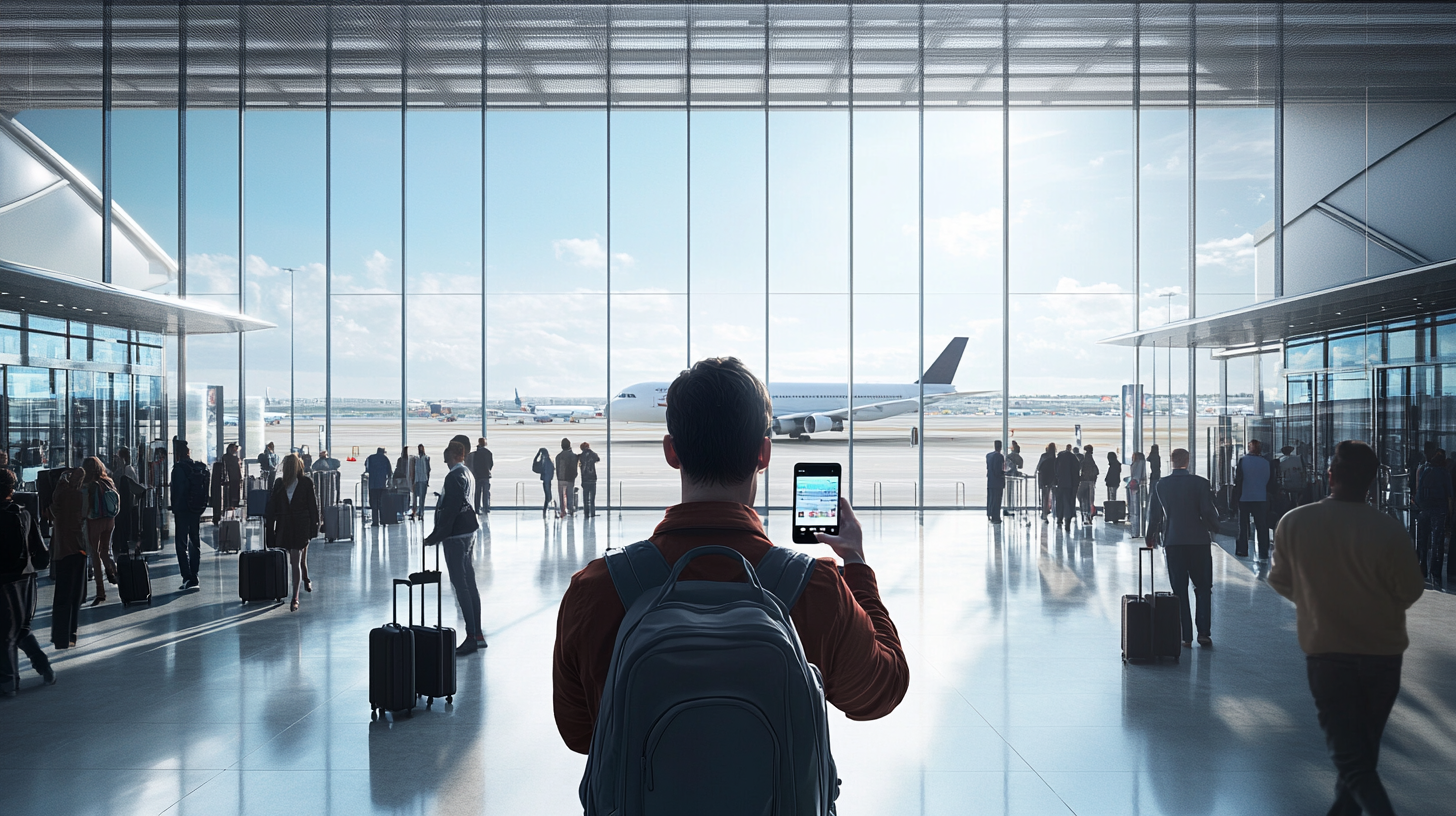
- Light Exposure: Seek natural sunlight to help reset your internal clock. Exposure to natural light is one of the most powerful ways to adjust your circadian rhythm.
- Align with Local Schedule: Eat meals and sleep according to the new time zone. Resist the urge to sleep during daytime hours upon arrival.
- Stay Active: Engage in light exercise like walking to boost alertness. Physical activity can increase energy levels and help adjust your body’s schedule.
- Short Naps: If necessary, take brief naps (20-30 minutes) to reduce sleepiness without impacting nighttime sleep.
Leveraging Technology to Overcome Jet Lag
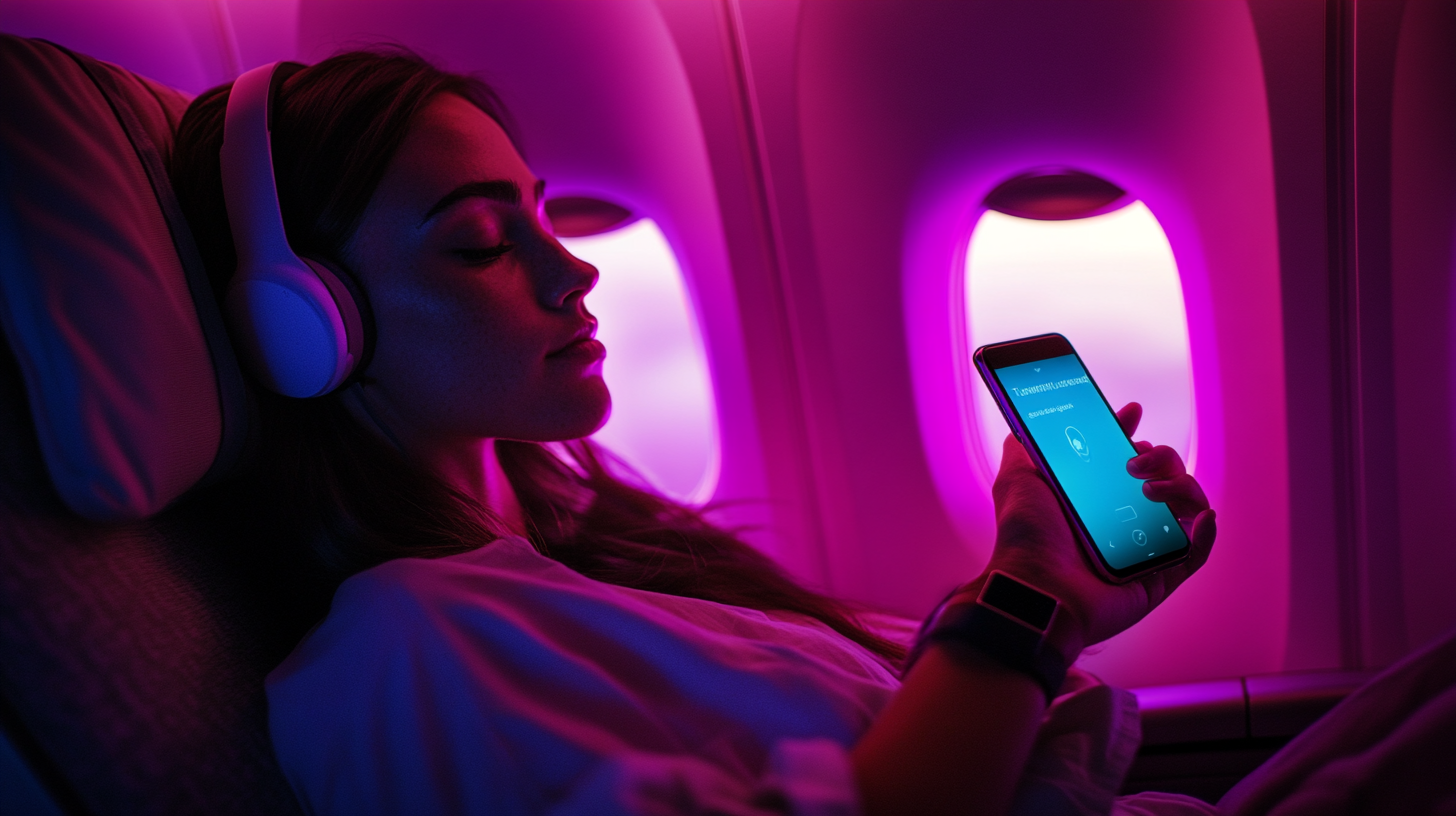
Technology offers innovative tools to supplement traditional strategies, making it easier to adjust to new time zones. From personalized apps to specialized gadgets, here’s how technology can help:
Jet Lag Apps for Personalized Plans
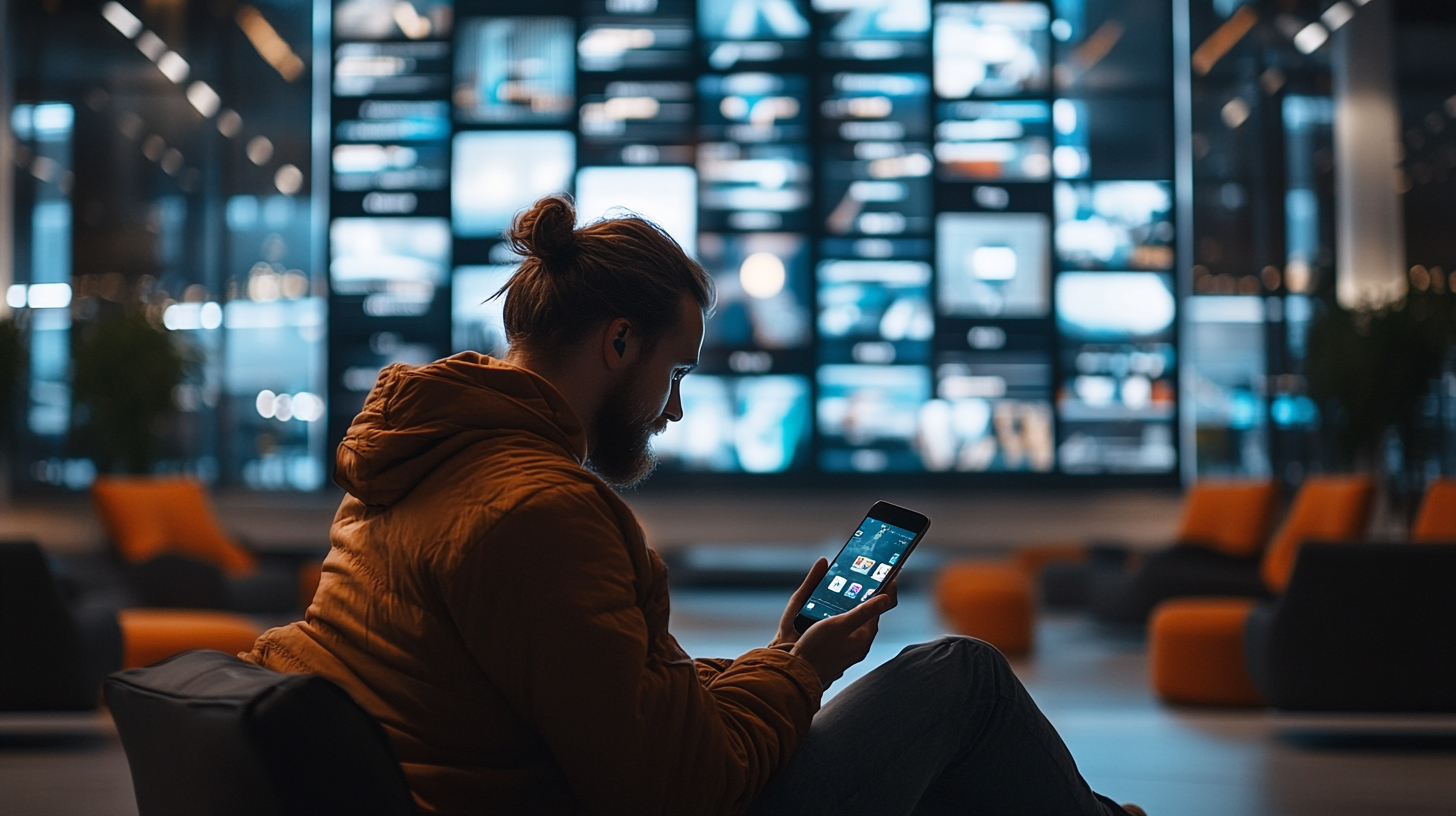
In the digital age, several apps have emerged as personal jet lag coaches. Apps such as Timeshifter and Time Shifter use algorithms grounded in sleep and circadian neuroscience to create tailor-made plans. By entering your itinerary, usual sleep pattern, and preferences, these apps provide detailed schedules indicating the optimal times for exposure to light and darkness, when to avoid or consume caffeine, and the best times to sleep or stay awake. This personalized approach enhances the effectiveness of traditional methods, offering guidance that adapts to individual needs. To explore how these apps leverage science, refer to Apps Revolutionizing Jet Lag Management with Personalized Schedules .
Light Therapy Devices
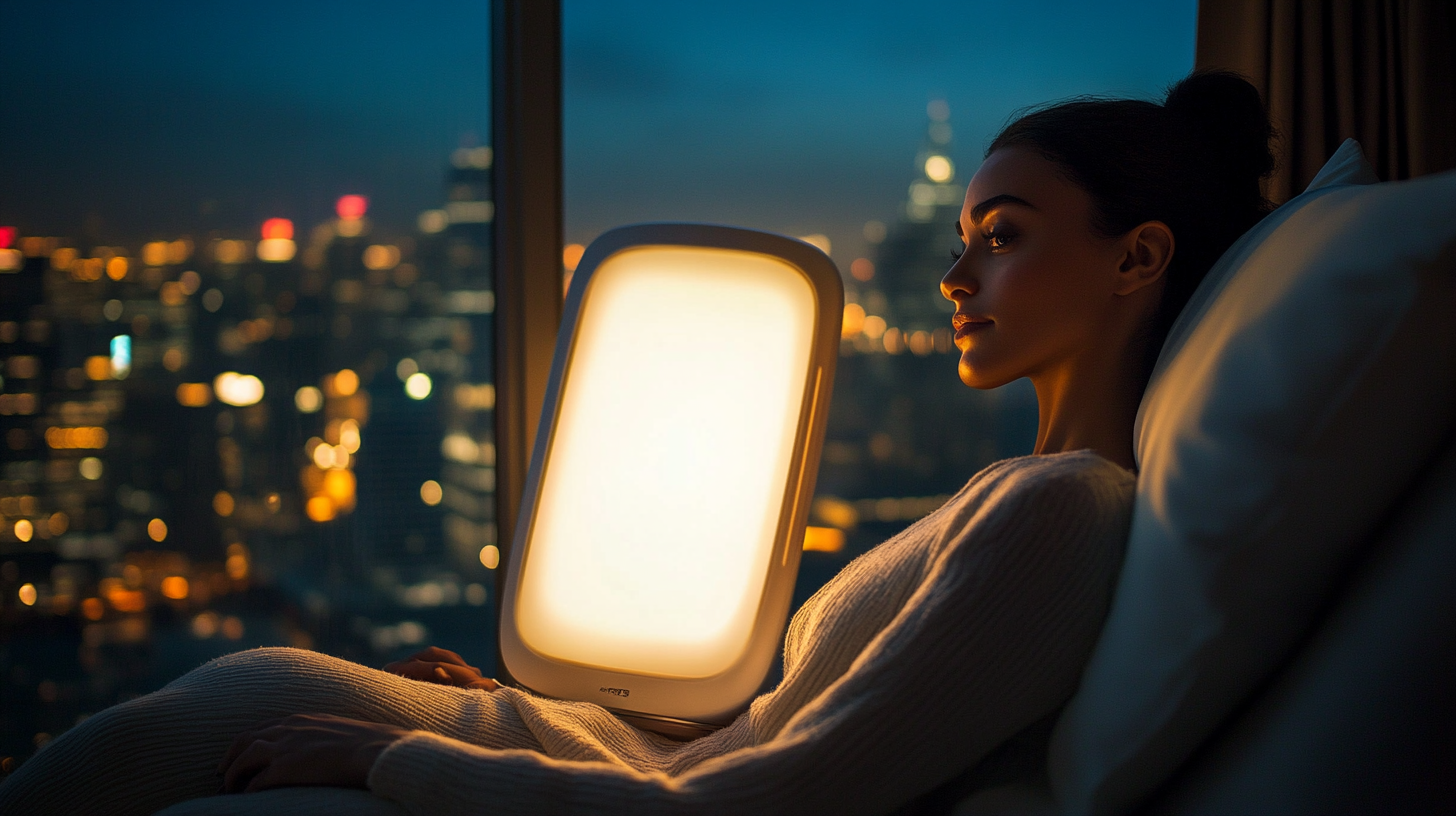
Since natural light profoundly influences our circadian rhythms, technology has harnessed this by developing portable light therapy devices. Devices like light therapy glasses and lamps emit specific wavelengths that mimic natural sunlight. By using these gadgets at prescribed times, travelers can effectively signal to their bodies when it’s time to be awake or prepare for sleep, thus accelerating the synchronization with the new time zone. Some advanced devices even adjust the light intensity and spectrum based on your travel plan, maximizing their effectiveness. Learn more about how these devices aid in adjusting circadian rhythms in Innovative Light Therapy Solutions for Jet Lag .
Smart Wearables and Sleep Tech
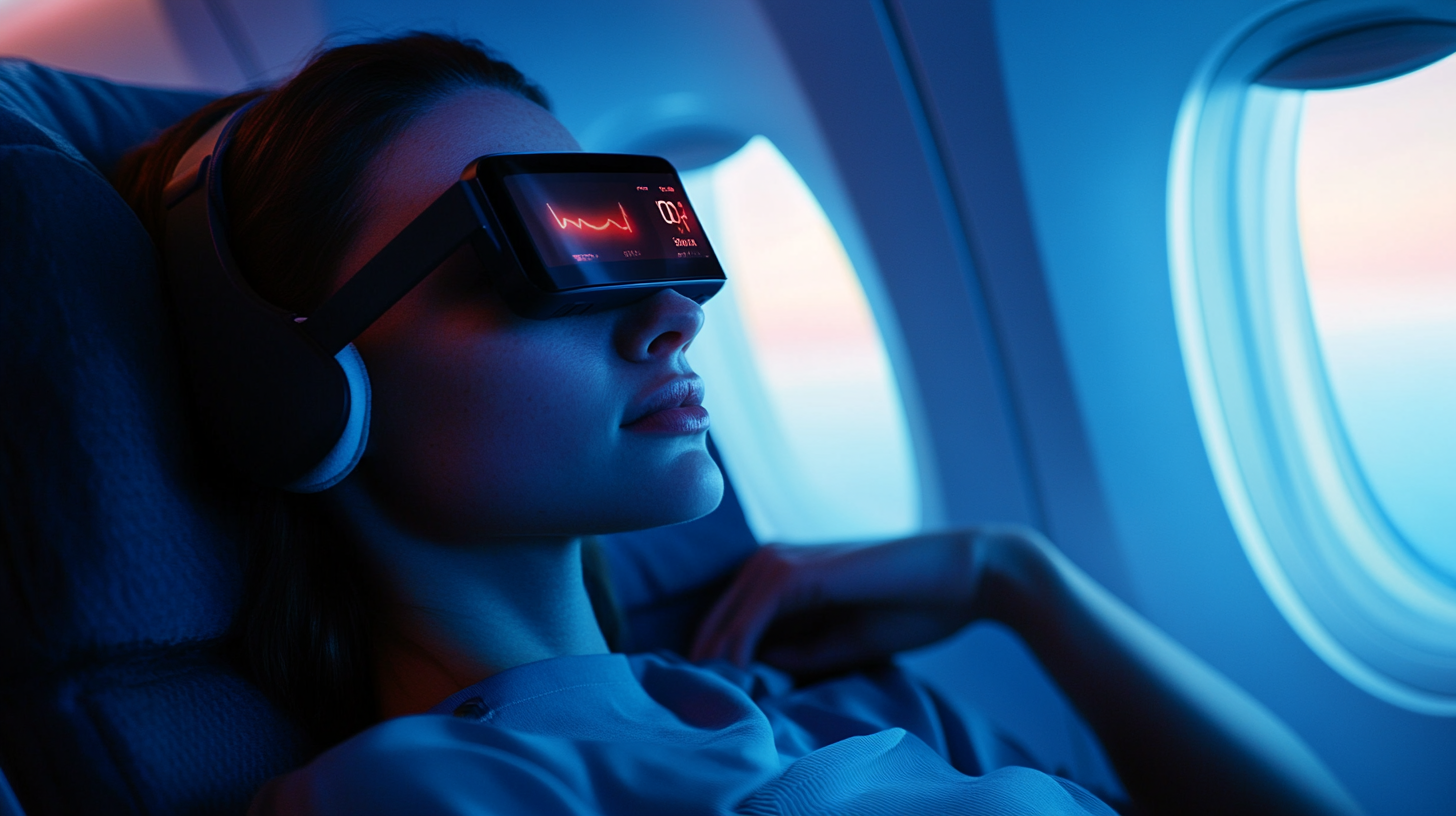
- Smart Eye Masks: Modern eye masks go beyond blocking light. Some incorporate built-in light therapy, delivering gentle pulses that help regulate melatonin production. Others offer features like soothing soundscapes or guided meditations to facilitate relaxation and sleep, even in a noisy cabin.
- Noise-Canceling Headphones: High-quality noise-canceling headphones can significantly reduce ambient noise such as engine hum or cabin chatter, allowing you to relax or sleep more easily. Pairing them with calming music or sleep-inducing audio enhances their effectiveness.
- White Noise Machines and Sleep Apps: Portable white noise machines or apps on your smartphone can create a consistent sound environment that masks disruptive noises in hotels or during flights. Some apps also track sleep patterns, providing insights to improve sleep quality over time.
For a deeper dive into wearable tech solutions, see Harnessing Smart Wearables to Combat Jet Lag .
Hydration Technology
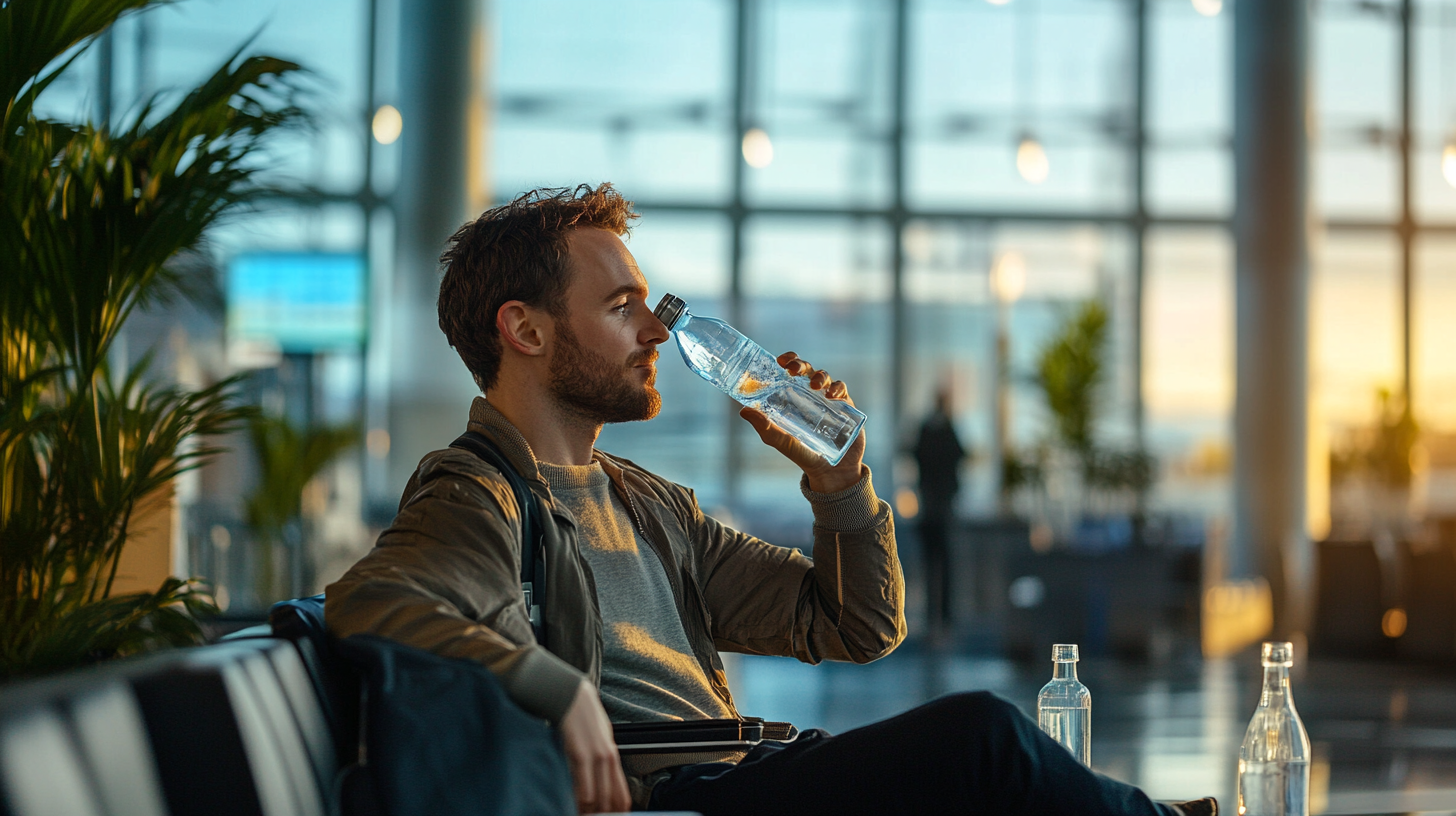
Staying hydrated is crucial in combating jet lag, and technology makes it easier to monitor fluid intake:
- Smart Water Bottles: Equipped with sensors and connected to smartphone apps, these bottles track how much water you’ve consumed throughout the day. They can prompt you with reminders to drink water at regular intervals, ensuring consistent hydration.
- Hydration Apps: These apps calculate your optimal water intake based on factors like weight, activity level, and environmental conditions. They send alerts and provide visual progress reports to keep you on track.
Discover how technology aids hydration in Smart Hydration Tools for Jet Lag Prevention .
Mathematical Models and Meal Timing
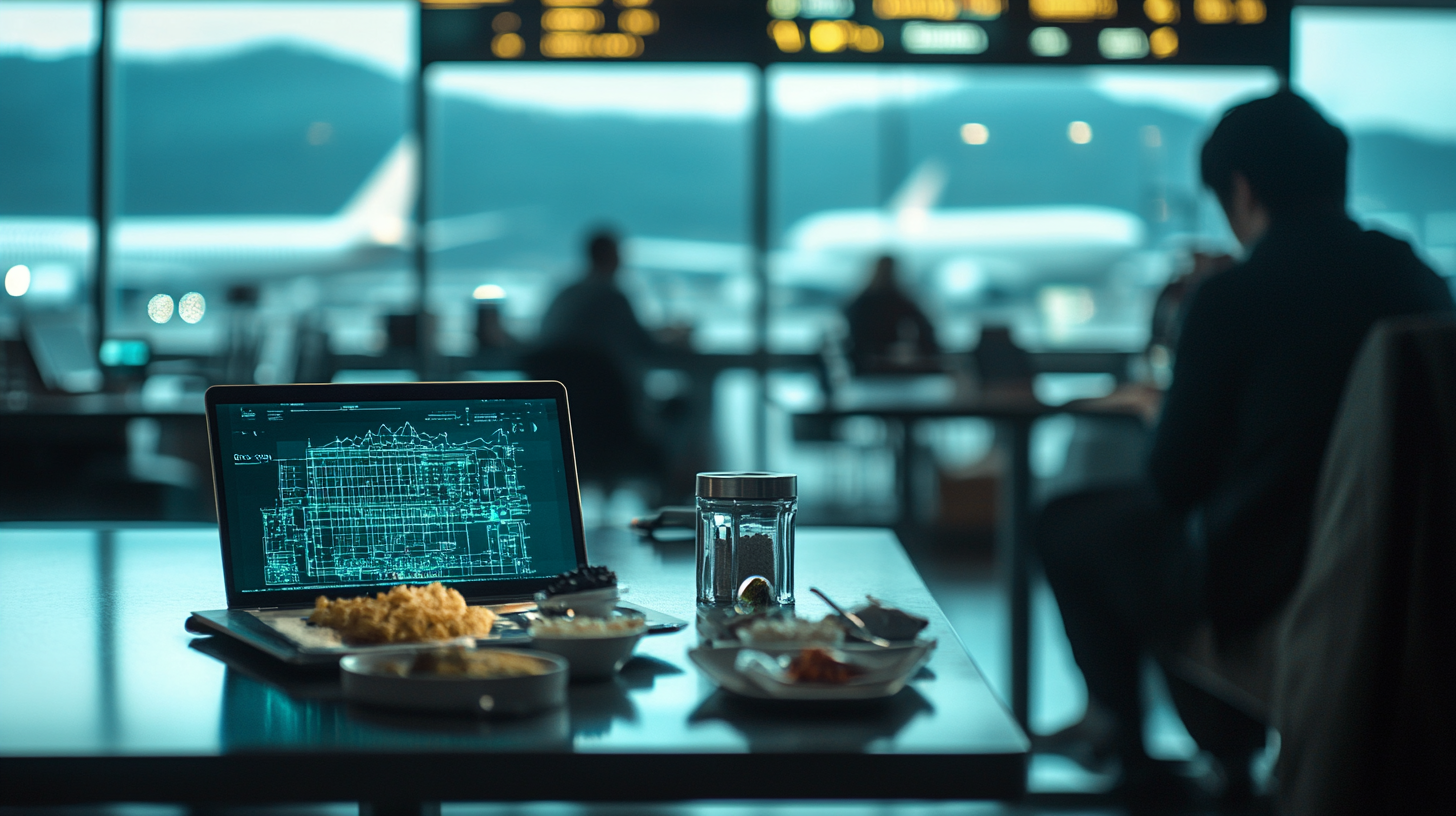
Emerging research highlights the importance of meal timing in adjusting circadian rhythms. Scientists from Northwestern University and the Santa Fe Institute created mathematical models demonstrating that consuming larger meals in the early morning of the destination’s time zone can expedite the resynchronization of internal clocks. Food intake serves as a secondary time cue (zeitgeber) for the body’s peripheral clocks located in organs like the liver and pancreas. By strategically timing meals, travelers can send strong signals to their bodies about the new daily schedule, aiding in quicker adaptation. Read about the science behind meal timing in Meal Timing Strategies Based on Mathematical Models for Jet Lag .
Expert Insights and Scientific Findings

Understanding jet lag from a scientific perspective provides valuable strategies for mitigation. Experts offer insights based on research and clinical experience:
- Dr. Alex Dimitriu: A specialist in psychiatry and sleep medicine, Dr. Dimitriu notes that jet lag mirrors symptoms of sleep deprivation, affecting cognitive function and mood. He advises gradual adjustment of sleep schedules before traveling, moderated use of melatonin as a sleep aid, and maximizing exposure to daylight at the destination to recalibrate the circadian rhythm.
- Research Institutions: The collaborative study by Northwestern University and the Santa Fe Institute underscores the effectiveness of meal timing in circadian adjustment. Their mathematical model provides a framework for optimizing meal schedules to combat jet lag.
- National Geographic’s Travel Experts: Seasoned travelers and scientists recommend planning flights to arrive during daylight hours to leverage natural light exposure. They suggest consuming a substantial breakfast in the new time zone to signal the start of the day and using sleep aids like masks or earplugs to improve sleep quality.
For further expert advice, refer to Scientific Approaches to Overcoming Jet Lag .
Strategic Use of Melatonin
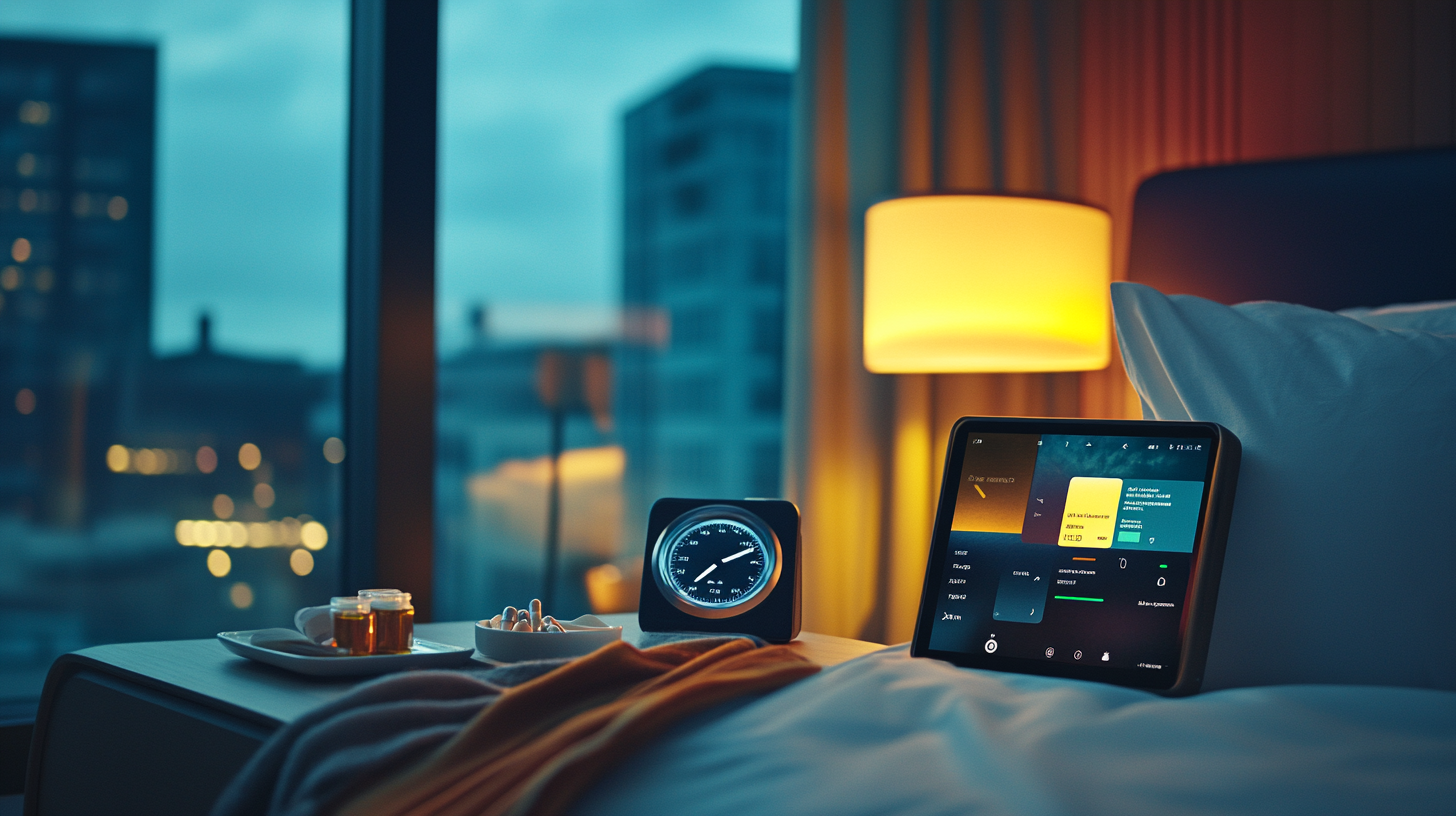
Melatonin supplementation can be an effective tool for reducing jet lag when used correctly. As a hormone naturally produced by the pineal gland, melatonin signals the body that it is time to sleep. When traveling across time zones, taking melatonin can help shift the sleep-wake cycle:
- Medical Consultation: Before starting melatonin, it’s important to consult with a healthcare provider, especially for individuals with underlying health conditions or those taking other medications.
- Timing and Dosage: Taking melatonin about 30 minutes before planned sleep time in the new time zone can aid in inducing sleep. Research suggests that doses as low as 0.5 to 5 mg can be effective; higher doses are not necessarily more beneficial and may cause side effects.
- Short-Term Use: Melatonin is most effective for short-term readjustments. Prolonged use is generally not recommended without medical supervision.
Explore guidelines on melatonin usage in Effective Melatonin Use for Jet Lag Recovery .
Exercise and Activity as Adjustment Tools
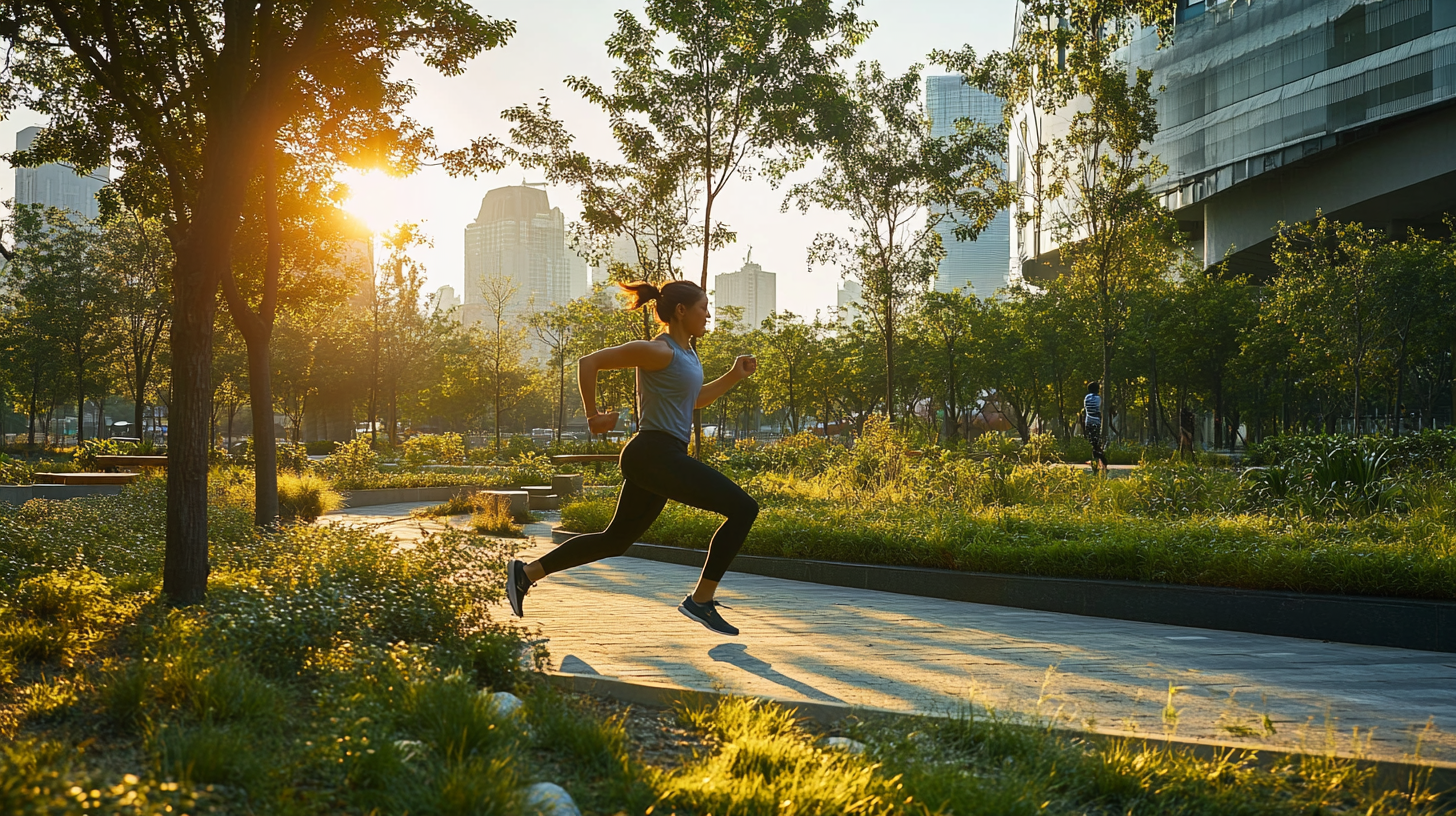
Incorporating exercise into your routine can significantly aid in adjusting to a new time zone. Physical activity helps regulate body temperature and hormone levels, reinforcing signals to your internal clock:
- Morning Exercise: Engaging in exercise during the morning hours of your destination helps signal the start of the day to your body. Activities like jogging, yoga, or a brisk walk are effective.
- Outdoor Activities: Exercising outdoors combines the benefits of physical activity with natural light exposure, enhancing the reset of your circadian rhythm.
- Evening Caution: High-intensity workouts late in the day may raise your core body temperature and stimulate alertness, making it harder to fall asleep. Opt for gentle stretching or relaxation exercises if needed.
Find out more about exercise timing in Optimizing Physical Activity to Combat Jet Lag .
Meal Timing and Dietary Considerations
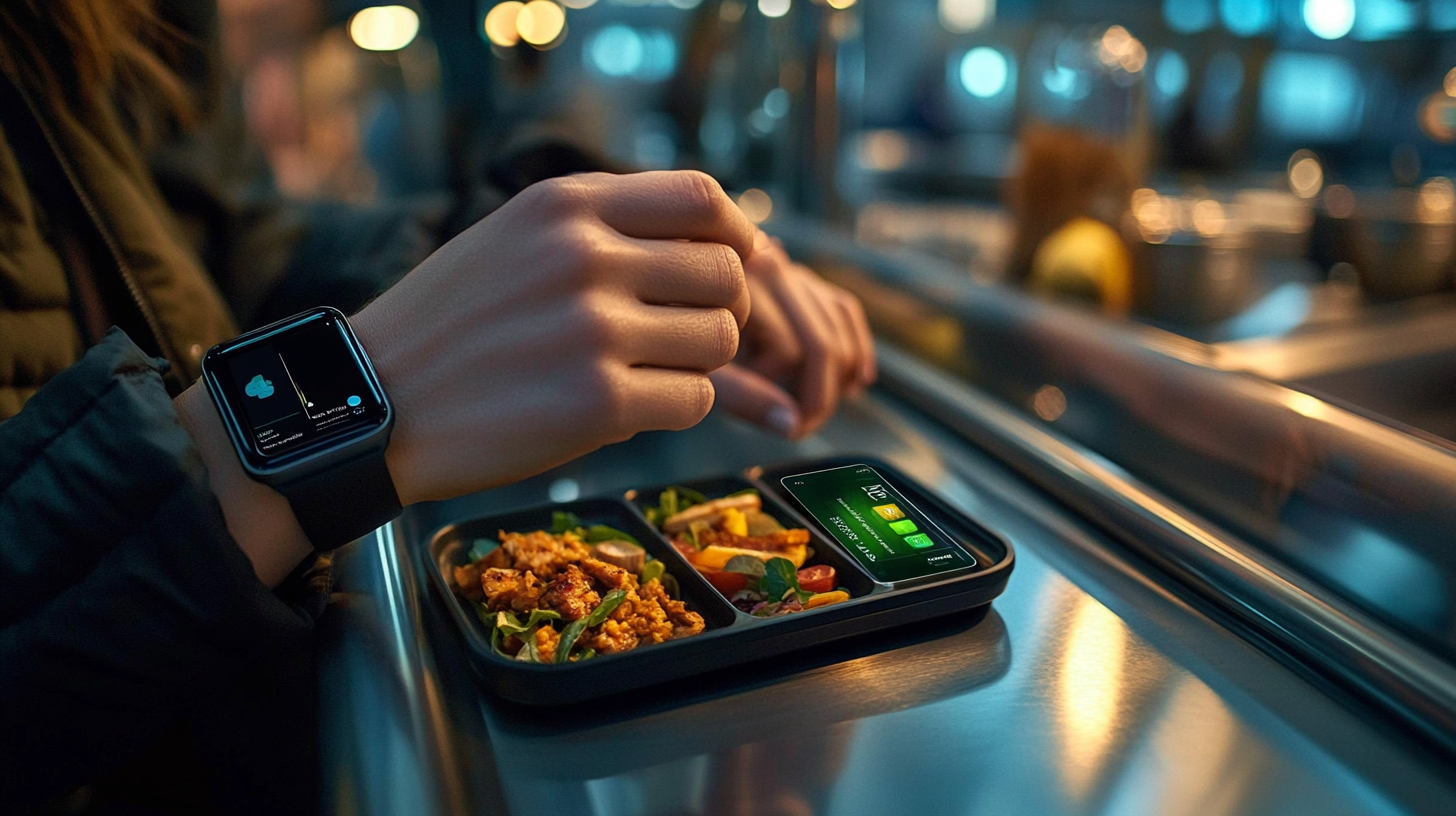
Food intake is a powerful secondary cue for circadian rhythms. Adjusting your meal schedule can significantly impact your body’s adjustment to a new time zone:
- Pre-Travel Meal Adjustment: Gradually shifting your mealtimes closer to those of your destination in the days leading up to your trip can ease the transition.
- Fasting Strategy: Some travelers practice fasting during long flights and break the fast upon arrival. This process, known as the Argonne Anti-Jet-Lag Diet, is believed to help reset the body’s internal clock more quickly.
- Light and Balanced Meals: Consuming easily digestible foods can prevent gastrointestinal discomfort, which is common when eating heavy meals at unusual times.
Read about dietary strategies in Meal Timing and Diet Adjustments for Jet Lag .
The Importance of Sleep Environment
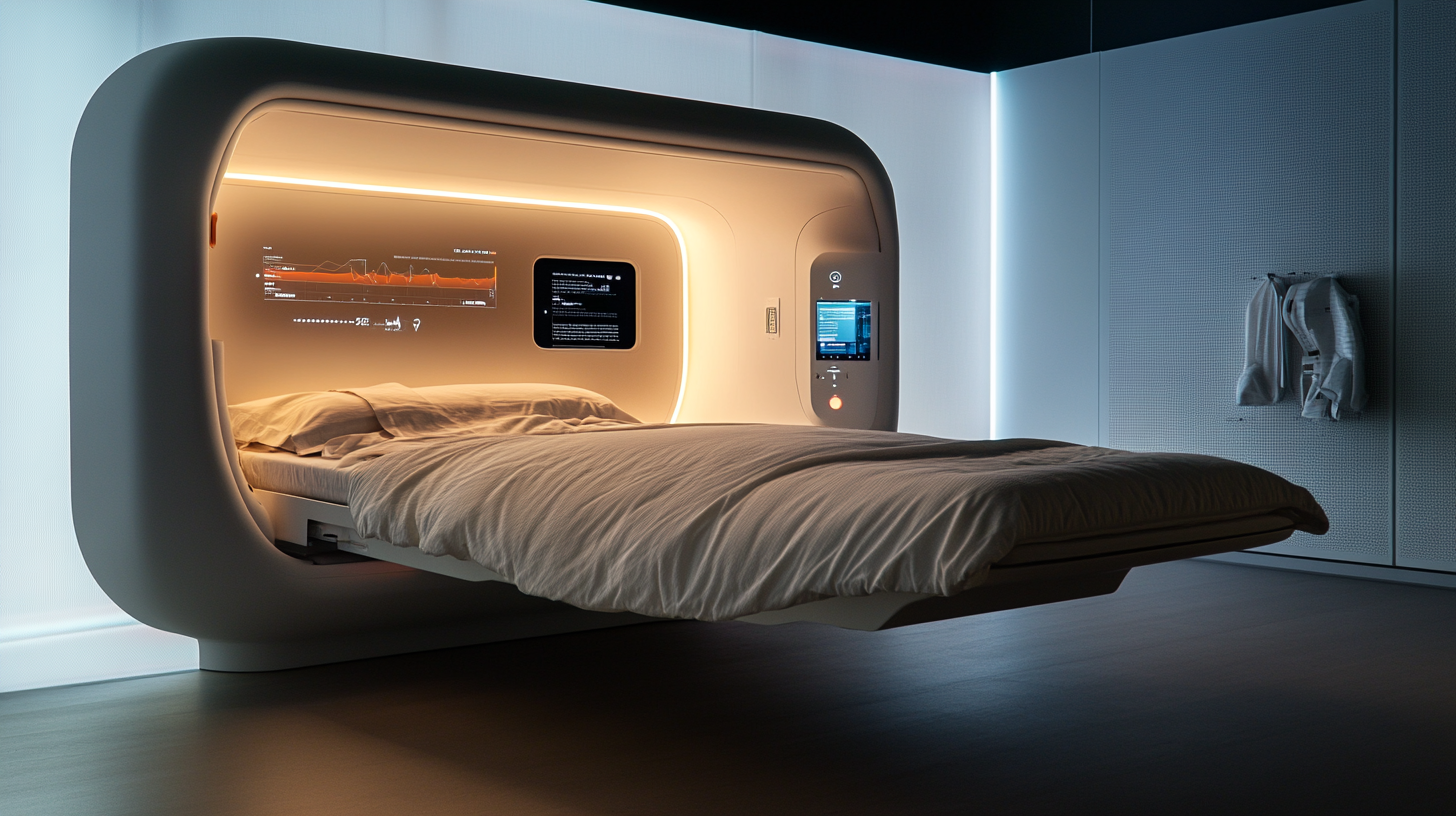
A conducive sleep environment helps ensure quality rest, which is essential when adjusting to a new time zone:
- Optimize Room Conditions: Adjust the room temperature to a cool setting, typically around 65°F (18°C), which is optimal for sleep. Ensure the room is well-ventilated.
- Minimize Noise and Light: Use earplugs and sleep masks if necessary. Consider white noise machines or apps to drown out disruptive sounds.
- Establish a Routine: Engaging in a consistent pre-sleep routine signals to your body that it’s time to rest. This could include reading, taking a warm shower, or practicing relaxation techniques.
- Personal Comfort Items: Bringing personal sleep items like pillows or blankets can provide comfort in an unfamiliar setting, reducing stress and promoting better sleep.
Understand the role of sleep environment in Creating the Ideal Sleep Setting to Overcome Jet Lag .
The Role of Mental and Relaxation Techniques
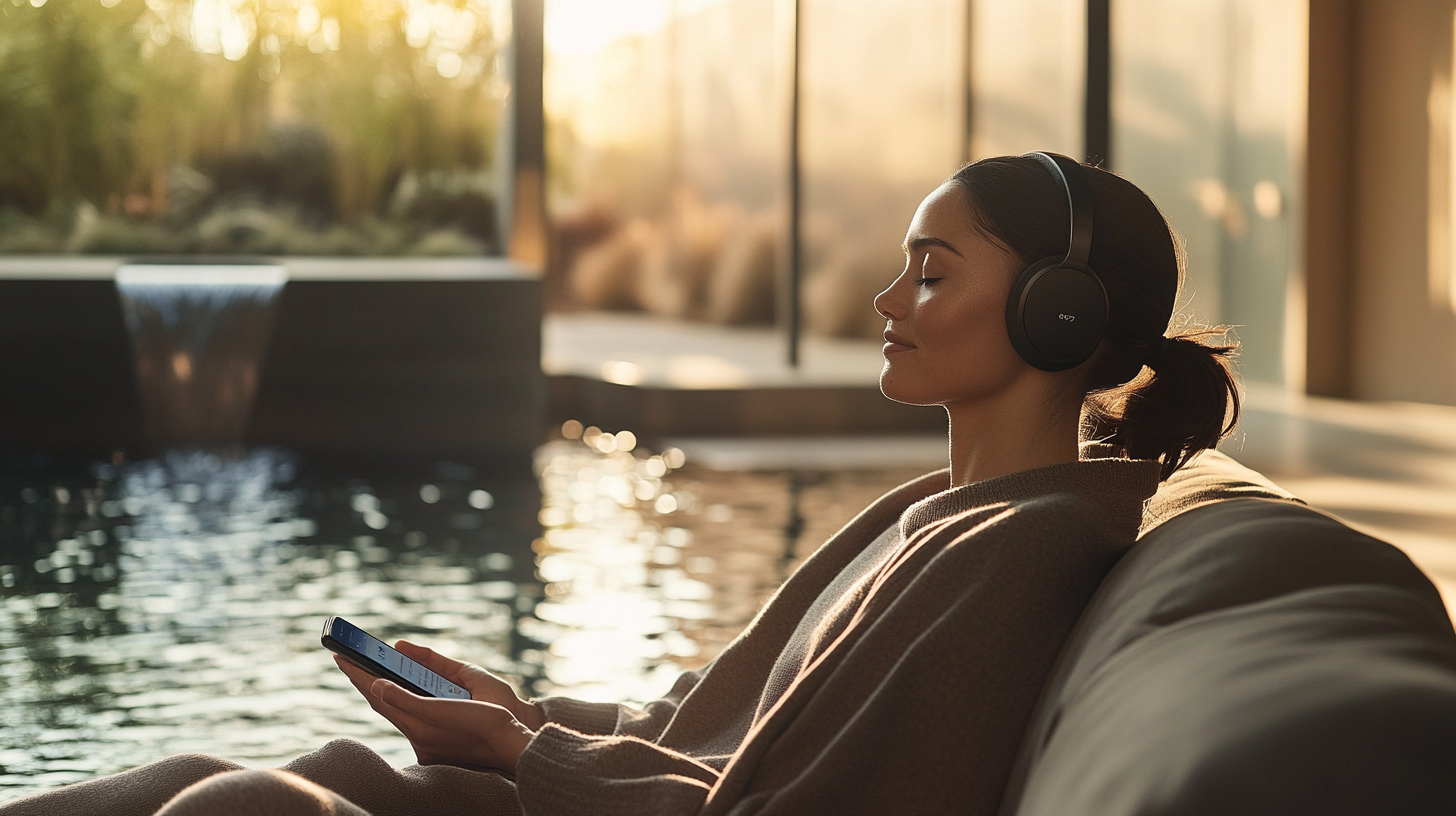
Psychological well-being plays a significant role in how effectively you adapt to a new time zone. Incorporating mental and relaxation techniques can ease the transition:
- Mindfulness Meditation: Practicing mindfulness or meditation can reduce travel-induced stress and anxiety. These practices promote relaxation and can improve sleep quality.
- Controlled Breathing Exercises: Techniques like diaphragmatic breathing activate the parasympathetic nervous system, promoting a state of calm conducive to sleep.
- Digital Detox Before Bed: Electronic devices emit blue light that suppresses melatonin production. Powering down devices at least an hour before sleep supports the natural sleep cycle.
- Stay Mentally Active: Engaging in stimulating yet relaxing activities during the day, such as reading, sightseeing, or solving puzzles, keeps you awake and alert, helping adjust to the local schedule.
Learn about relaxation techniques in Mental Strategies to Ease Jet Lag Symptoms .
Final Thoughts
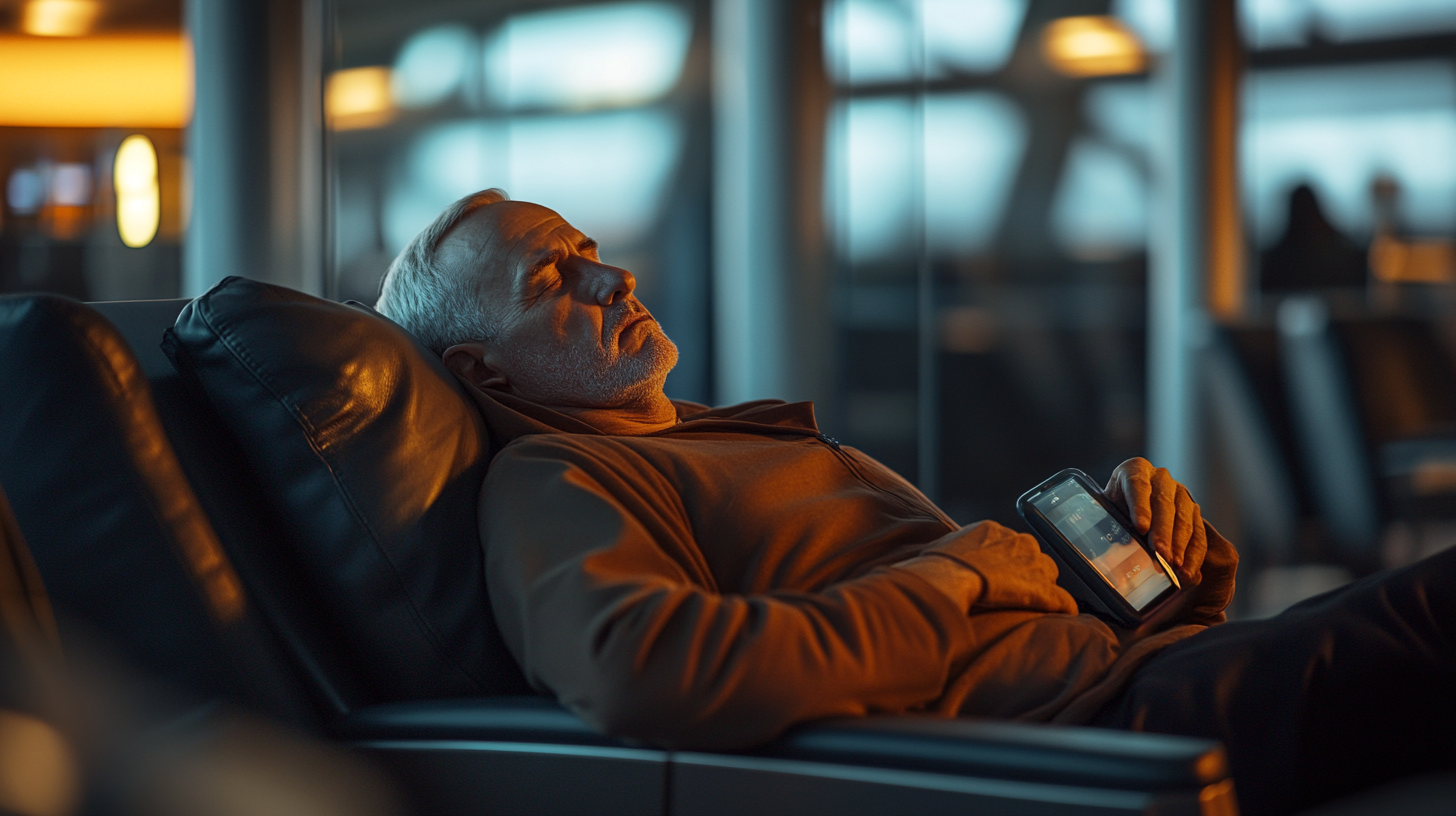
In an increasingly connected world, where crossing time zones is commonplace, jet lag no longer needs to be a daunting inevitability. By combining time-honored strategies with innovative technological solutions, travelers can take proactive steps to align their internal clocks swiftly with new environments. Understanding the science behind jet lag empowers individuals to tailor approaches that suit their unique needs. Embracing these methodologies not only enhances personal well-being but also maximizes the enjoyment and productivity of the travel experience.
Follow us back to Seat 5A for more insights and tips on making your travel experiences seamless and enjoyable. With the right preparation and tools, jet lag can be effectively managed, leaving travelers free to fully immerse themselves in their destinations.



